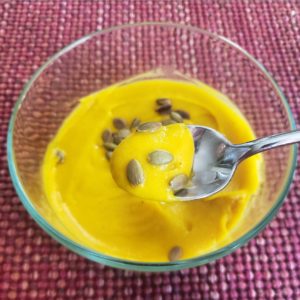Written by: Natalie Davidson, WEC Team Leader and Team Supervisor
www.naturallynourished.net
Staying healthy this fall and winter is likely higher on your priority list than usual. Because these seasons typically bring more colds and flu, plus the fact that we are still in a pandemic, are all motivating reasons to take extra good care of yourself during this time. Here are 5 helpful nutritional tips to help keep you at your optimal health this season.
1) Eat with the Season
Peak season produce not only tastes better but it is also better for you! When you choose fruits and veggies that are grown in their appropriate season, they will be more nutrient dense than those grown out of season. Items to enjoy for the next couple of months include winter squashes, beets, carrots, parsnips, cabbages, radishes, turnips, fennel, potatoes, brussel sprouts and apples.
2) Spice it Up
The familiar spices that are reminiscent of fall and winter treats bring both warming flavors and healthy benefits. Cinnamon, nutmeg, allspice, ginger and cardamom each offer an abundance of antioxidant, a boost to the immune system, as well as many other healing properties. Try adding some spice to your morning oatmeal or smoothie, to soups, sprinkled on sweet potatoes or winter squashes or even mixed in with your tea or coffee.
3) Eat the Rainbow
Coloring your plate with a variety of veggies not only looks pretty (we eat with our eyes first!), but it also ensures you are getting an array of nutrients to help optimize health. The spectrum of colors comes from different phytonutrients found within the plant. Each color of phytonutrient has specific health benefits and they all assist the body with detoxification and strengthening immunity. When you plan your meals or choose your produce each week, make it a point to include and select many different colors.
4) Limit Sugar Intake
With so many festive treats bringing temptation during the fall and winter, limiting sugar intake is not always an easy thing to do. While I don’t believe you should deprive yourself completely, I do encourage you to make mindful choices. Sometimes a taste is all you need to satisfy your sweet tooth, so try having a bite or two rather than over indulging. Aside from offering empty calories and zero nutritional value, sugar can lower the immune system response. It is also highly inflammatory, which can lead to disease.
5) More than the Food We Eat
Remember that we feed ourselves in all different ways. The food we choose to eat is our primary nutrition and of course very important. Just as important is all of the other ways that we choose to nourish ourself. Make sure you are getting adequate rest each night. Stay hydrated, aiming to have half your weight in ounces of water. Move your body each day. Spend time in nature. Find ways to help manage stress such as meditation, breathing practices, tai chi or journaling. Spend time doing more of what brings you joy!

Roasted Butternut Squash Soup
My favorite butternut squash soup recipe is cozy, delicious and nutritious! This soup is a great way to incorporate seasonal produce and spices, is naturally sugar free and an easy way to add the color orange to your diet. Plus, it’s super easy to make!
Ingredients:
• 1 butternut squash, medium sized
• 2 cups of vegetable broth
• 3 cloves of garlic, peeled and minced
• 1 carrot, peeled and chopped
• 1 stalk of celery, chopped
• 1 Granny Smith apple, peeled, cored and chopped
• 1 medium yellow onion, peeled and diced
• 1 sprig of fresh sage
• ½-1 teaspoon ground cinnamon
• Dash of nutmeg
• Salt and fresh ground pepper to taste
• Pinch of crushed red pepper or to taste (optional)
• 1 can of coconut milk (full fat)
To Make:
1) Roast your butternut squash- Cut butternut squash in half lengthwise. Scoop out the seeds and stringy pieces from each half. Place squash cut side up onto a baking sheet and brush each half lightly with oil of choice (I use avocado oil). Season with salt and pepper. Roast the squash in a 400° oven for about 45 minutes, or until soft. Remove from oven and allow squash to cool. Once cool enough to handle, scoop the flesh of the squash out of the peel, into a bowl, and set aside.
2) In a large soup pot, heat about a tablespoon of oil over medium-high heat. Saute onion, carrot and celery until they become soft, about 5 minutes. Add minced garlic and cook for a minute longer.
3) Add broth, squash, apple, sage, cinnamon, nutmeg and salt and pepper and stir well. Bring mixture to a boil, stir again and reduce heat to a simmer. Cover the pot and allow the soup to simmer for about 20 minutes, stirring occasionally.
4) Remove the sprig of sage. Stir in the coconut milk and crushed red pepper (optional).
5) Puree the soup by using and immersion blender or a regular blender. If you use the regular blender be careful not to overfill the blender jar and blend in batches.
6) Taste the soup and adjust the seasoning as needed.
7) Serve soup with a colorful salad and topped with your favorite garnishes such as toasted pumpkin seeds, hemp seeds, slivered almonds or sharp cheddar cheese.